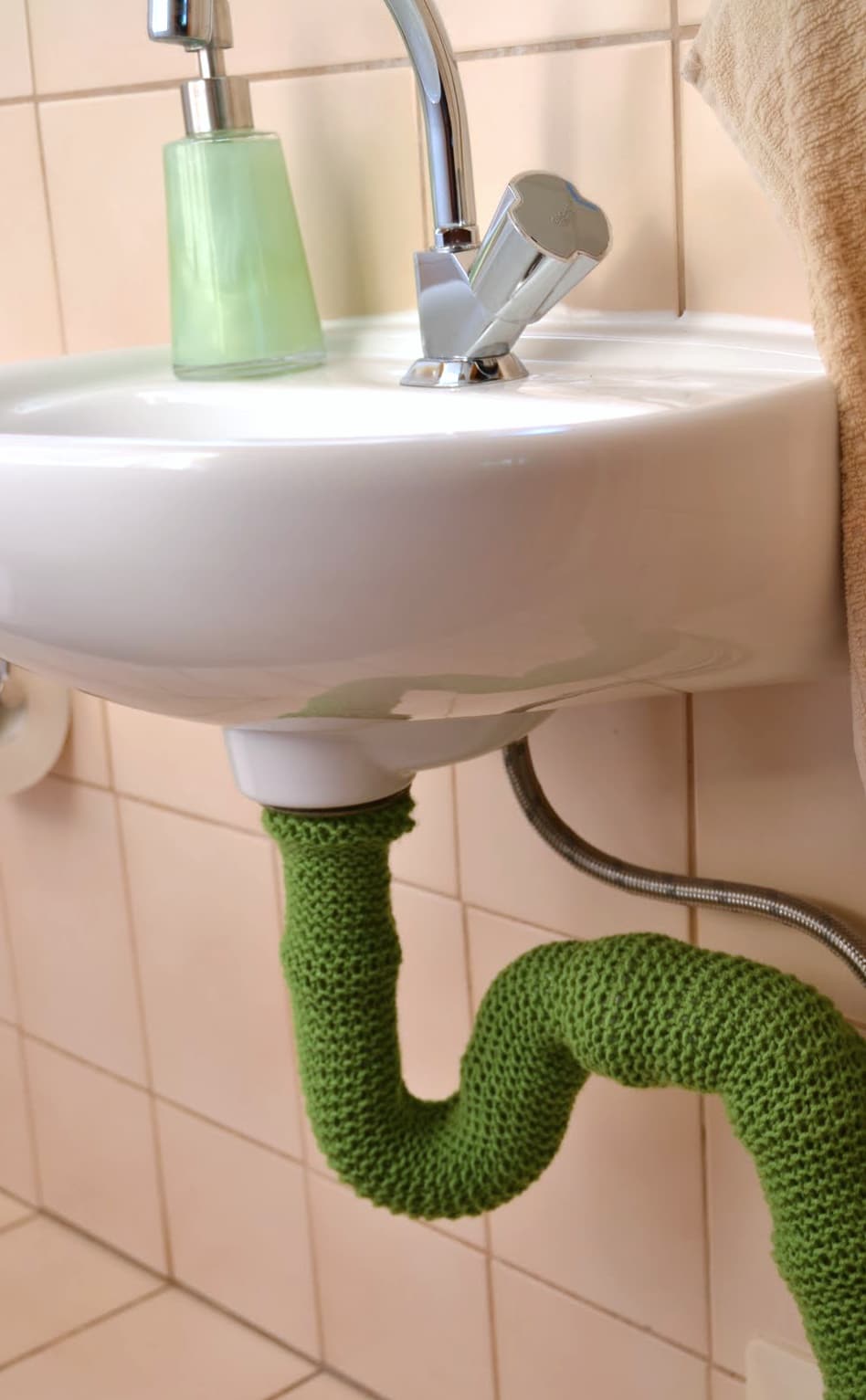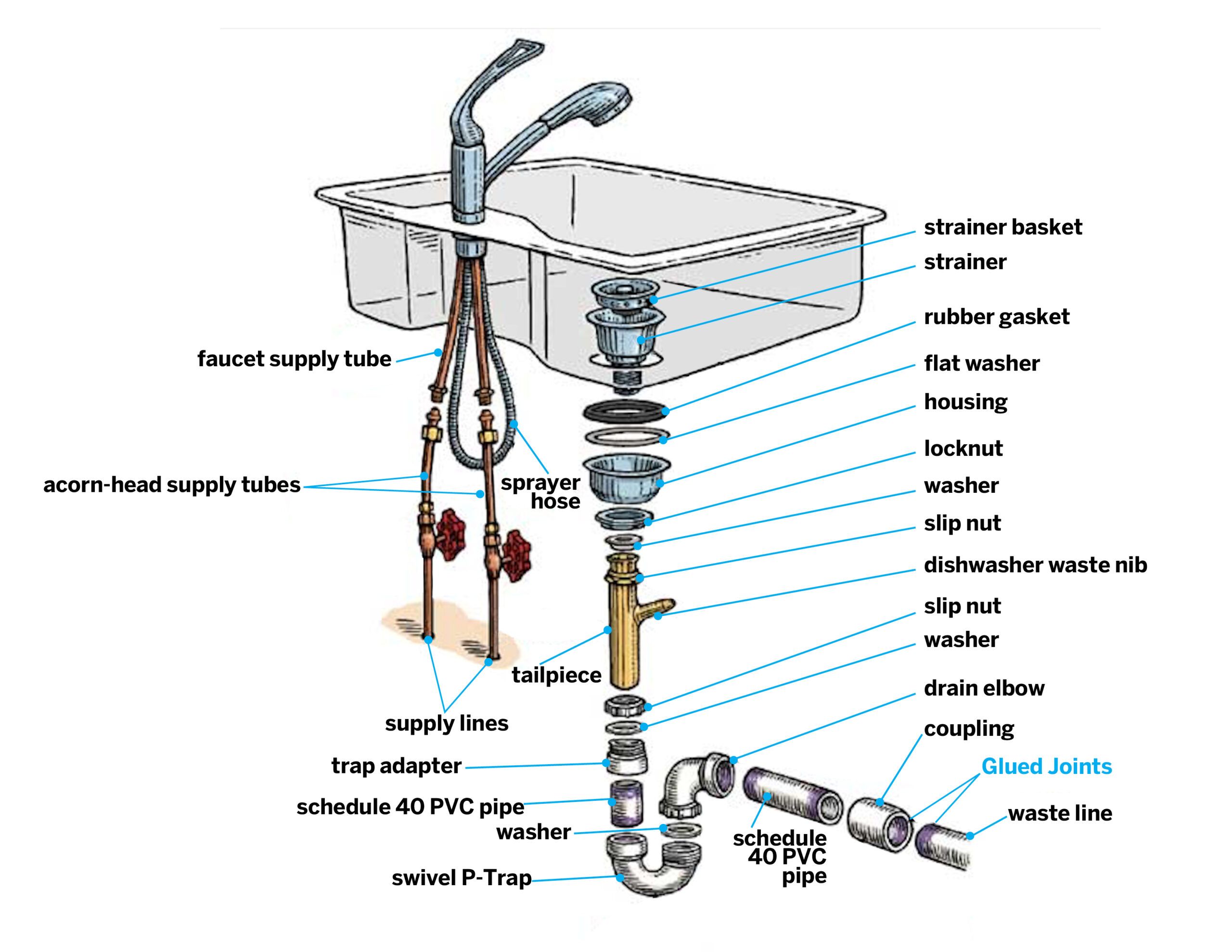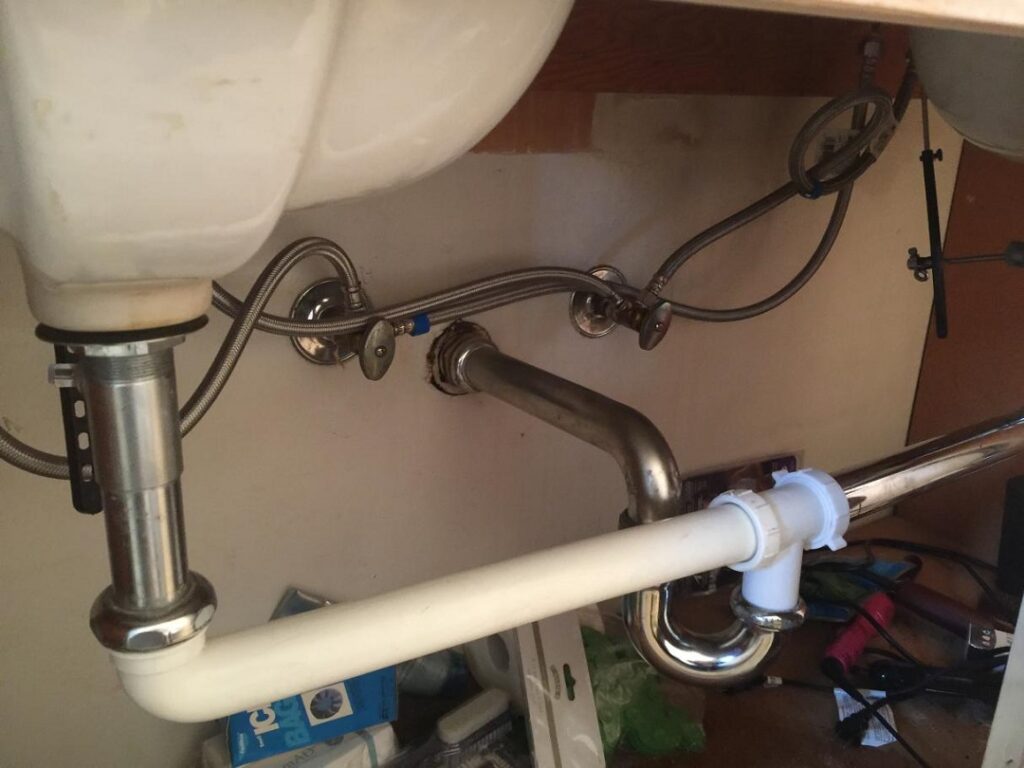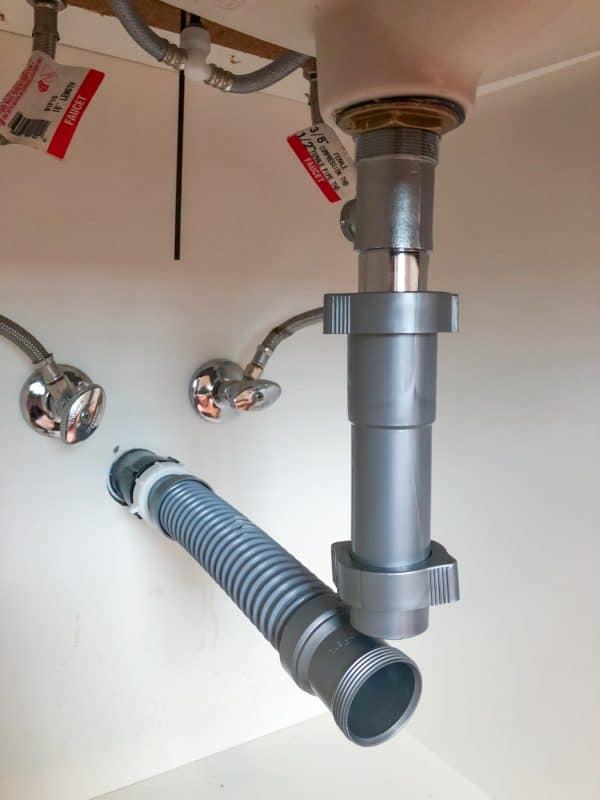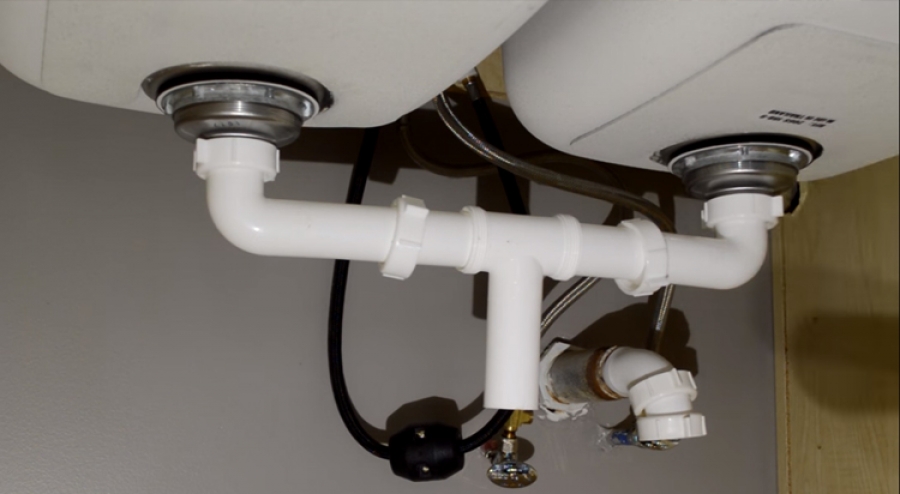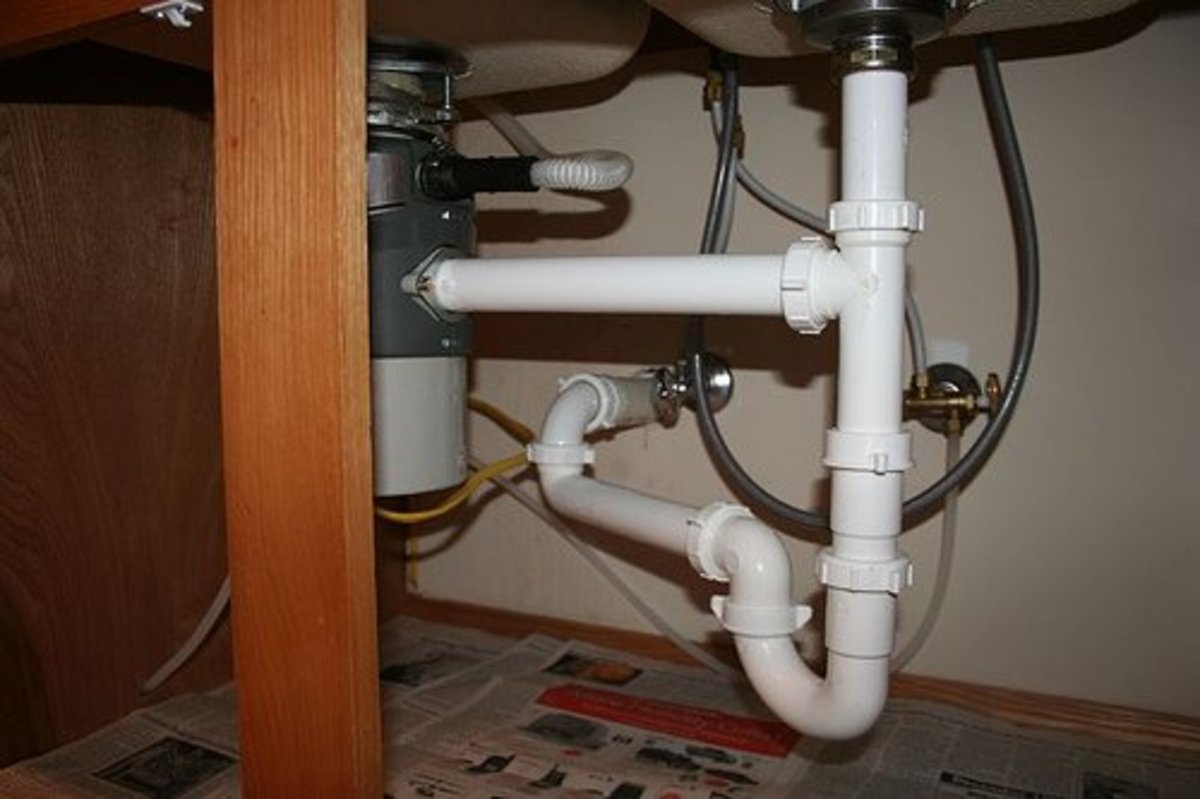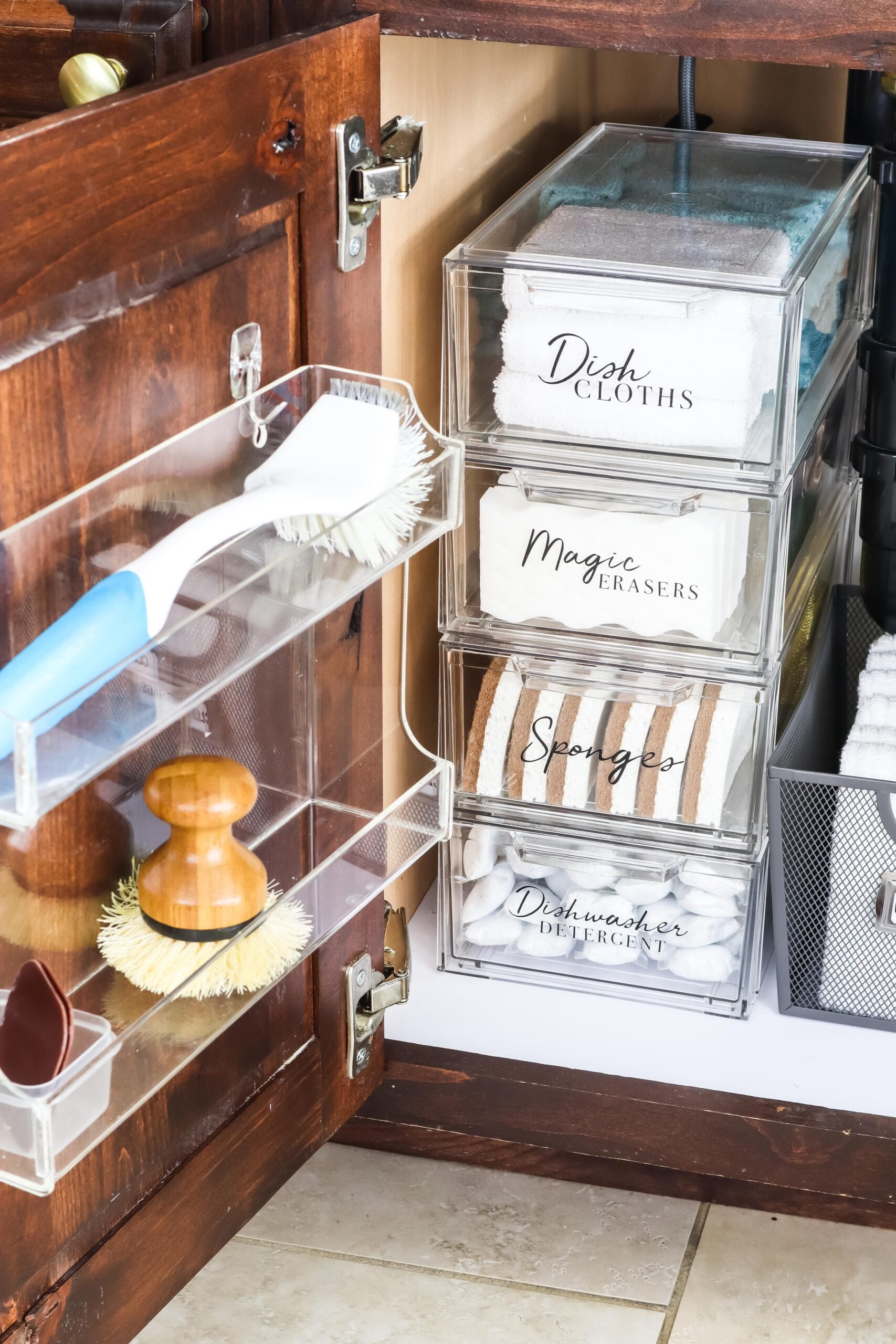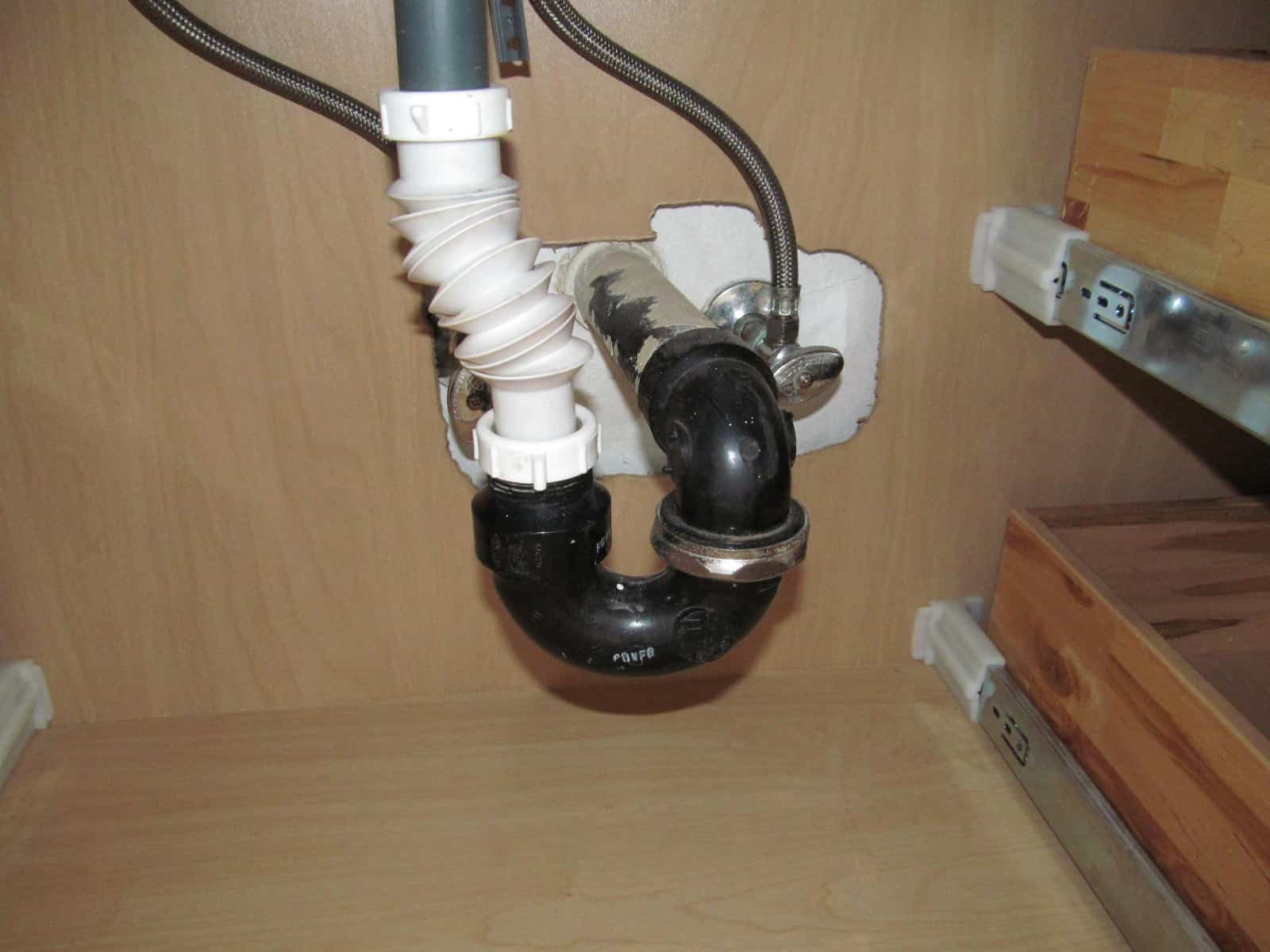Are you tired of dealing with rigid and difficult-to-install pipes under your kitchen sink? Look no further than a flexible pipe! Not only is it easier to install, but it also offers more flexibility and versatility in your sink setup. In this guide, we will walk you through the process of installing a plastic flexi pipe under your kitchen sink in just a few simple steps.How to Install a Flexible Pipe Under the Kitchen Sink
Before we get started, make sure you have all the necessary tools and materials on hand. You will need a plastic flexi pipe, adjustable wrench, pipe cutter, Teflon tape, and a bucket or basin to catch any excess water. Now let's get started!Installing Plastic Flexi Pipe Under Kitchen Sink: A Step-by-Step Guide
Start by measuring the distance between the drain pipe and the sink drain. Be sure to add a few extra inches to allow for any bends or curves in the pipe. Once you have your measurements, use a pipe cutter to cut the plastic flexi pipe to the desired length.Step 1: Measure and Cut the Pipe
Apply a few wraps of Teflon tape to the threads of the sink drain. This will help create a tight seal and prevent any leaks. Then, carefully screw the flexible pipe onto the drain until it is securely attached.Step 2: Connect the Pipe to the Sink Drain
Next, you will need to connect the other end of the plastic flexi pipe to the drain pipe. Use an adjustable wrench to loosen the nut on the drain pipe and slide it down the pipe. Insert the end of the flexible pipe into the drain pipe and tighten the nut back in place.Step 3: Connect the Pipe to the Drain Pipe
Once everything is connected, turn on the water and let it run for a few minutes. Keep an eye out for any leaks and make sure the pipe is securely attached to both the sink drain and the drain pipe. If you notice any leaks, tighten the connections and retest until everything is leak-free.Step 4: Test for Leaks
There are several benefits to using plastic flexi pipes for your kitchen sink installation. Firstly, they are much easier to install compared to rigid pipes, making them perfect for DIY projects. They also offer more flexibility, allowing you to easily adjust the pipe to fit your specific sink setup. Additionally, plastic flexi pipes are resistant to corrosion and rust, making them a durable and long-lasting option for your kitchen sink.The Benefits of Using Plastic Flexi Pipe for Kitchen Sink Installation
While installing a plastic flexi pipe under your kitchen sink is a relatively simple process, there are a few common mistakes that you should avoid to ensure a successful installation. One of the most common mistakes is not measuring the pipe correctly, resulting in a pipe that is either too short or too long. Be sure to carefully measure and cut the pipe to fit your specific sink setup. Another mistake is not properly tightening the connections. This can lead to leaks and potential water damage. Use an adjustable wrench to ensure all connections are tight and secure.Common Mistakes to Avoid When Installing Plastic Flexi Pipe Under Kitchen Sink
To recap, here is a list of the tools and materials you will need for installing a plastic flexi pipe under your kitchen sink:Tools and Materials Needed for Installing Plastic Flexi Pipe Under Kitchen Sink
To ensure a proper connection and seal for your plastic flexi pipe under the kitchen sink, follow these steps:How to Properly Connect and Seal Plastic Flexi Pipe Under Kitchen Sink
Why Choose Plastic Flexi Pipe for Your Kitchen Sink?

The Benefits of Using Plastic Flexi Pipe
 When it comes to installing a new kitchen sink, one of the key components is the plumbing system. In the past, traditional metal pipes were the go-to choice for most homeowners. However, with advancements in technology and materials, plastic flexi pipes have become a popular alternative. Here are some of the main reasons why you should consider using plastic flexi pipes for your kitchen sink installation.
1. Flexibility and Durability
One of the main benefits of plastic flexi pipes is their flexibility. These pipes are made from a type of plastic called polyethylene, which is strong and bendable. This makes it easier to maneuver the pipes into tight spaces and around corners, without having to use multiple fittings and joints. Moreover, plastic flexi pipes are highly durable and resistant to corrosion, making them a long-lasting option for your kitchen plumbing.
2. Easy Installation
Compared to traditional metal pipes, plastic flexi pipes are much easier to install. They come in pre-cut lengths and can be easily connected with push-fit connectors, eliminating the need for soldering or welding. This not only saves time and effort during installation but also reduces the risk of leaks and water damage in the future.
3. Cost-Effective
Plastic flexi pipes are a cost-effective option for kitchen sink installations. They are less expensive than metal pipes and require fewer fittings and joints, which further reduces the overall cost. Additionally, their lightweight and easy installation process can save you money on labor costs.
4. Corrosion and Chemical Resistance
Plastic flexi pipes are highly resistant to corrosion and chemicals, making them ideal for kitchen sink installations. With metal pipes, there is always a risk of corrosion and rust buildup over time, which can affect water flow and quality. Plastic flexi pipes, on the other hand, are not affected by chemicals often found in kitchen sinks, such as detergents and cleaning products.
5. Noise Reduction
Another advantage of using plastic flexi pipes is their ability to reduce noise. With traditional metal pipes, water flow can often create loud and disruptive noises. However, plastic flexi pipes dampen the sound, providing a quieter and more peaceful kitchen environment.
When it comes to installing a new kitchen sink, one of the key components is the plumbing system. In the past, traditional metal pipes were the go-to choice for most homeowners. However, with advancements in technology and materials, plastic flexi pipes have become a popular alternative. Here are some of the main reasons why you should consider using plastic flexi pipes for your kitchen sink installation.
1. Flexibility and Durability
One of the main benefits of plastic flexi pipes is their flexibility. These pipes are made from a type of plastic called polyethylene, which is strong and bendable. This makes it easier to maneuver the pipes into tight spaces and around corners, without having to use multiple fittings and joints. Moreover, plastic flexi pipes are highly durable and resistant to corrosion, making them a long-lasting option for your kitchen plumbing.
2. Easy Installation
Compared to traditional metal pipes, plastic flexi pipes are much easier to install. They come in pre-cut lengths and can be easily connected with push-fit connectors, eliminating the need for soldering or welding. This not only saves time and effort during installation but also reduces the risk of leaks and water damage in the future.
3. Cost-Effective
Plastic flexi pipes are a cost-effective option for kitchen sink installations. They are less expensive than metal pipes and require fewer fittings and joints, which further reduces the overall cost. Additionally, their lightweight and easy installation process can save you money on labor costs.
4. Corrosion and Chemical Resistance
Plastic flexi pipes are highly resistant to corrosion and chemicals, making them ideal for kitchen sink installations. With metal pipes, there is always a risk of corrosion and rust buildup over time, which can affect water flow and quality. Plastic flexi pipes, on the other hand, are not affected by chemicals often found in kitchen sinks, such as detergents and cleaning products.
5. Noise Reduction
Another advantage of using plastic flexi pipes is their ability to reduce noise. With traditional metal pipes, water flow can often create loud and disruptive noises. However, plastic flexi pipes dampen the sound, providing a quieter and more peaceful kitchen environment.
In Conclusion
 Plastic flexi pipes offer numerous benefits for kitchen sink installations, from flexibility and durability to cost-effectiveness and noise reduction. By choosing plastic flexi pipes for your plumbing system, you can ensure a hassle-free and long-lasting solution for your kitchen sink. So, next time you're planning a kitchen renovation, consider using plastic flexi pipes for a smooth and efficient installation process.
Plastic flexi pipes offer numerous benefits for kitchen sink installations, from flexibility and durability to cost-effectiveness and noise reduction. By choosing plastic flexi pipes for your plumbing system, you can ensure a hassle-free and long-lasting solution for your kitchen sink. So, next time you're planning a kitchen renovation, consider using plastic flexi pipes for a smooth and efficient installation process.
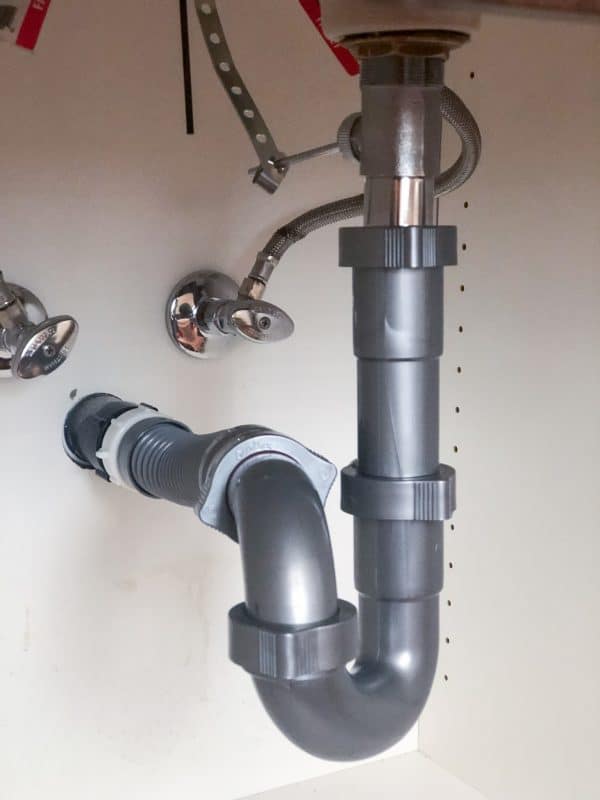


/how-to-install-a-sink-drain-2718789-hero-24e898006ed94c9593a2a268b57989a3.jpg)
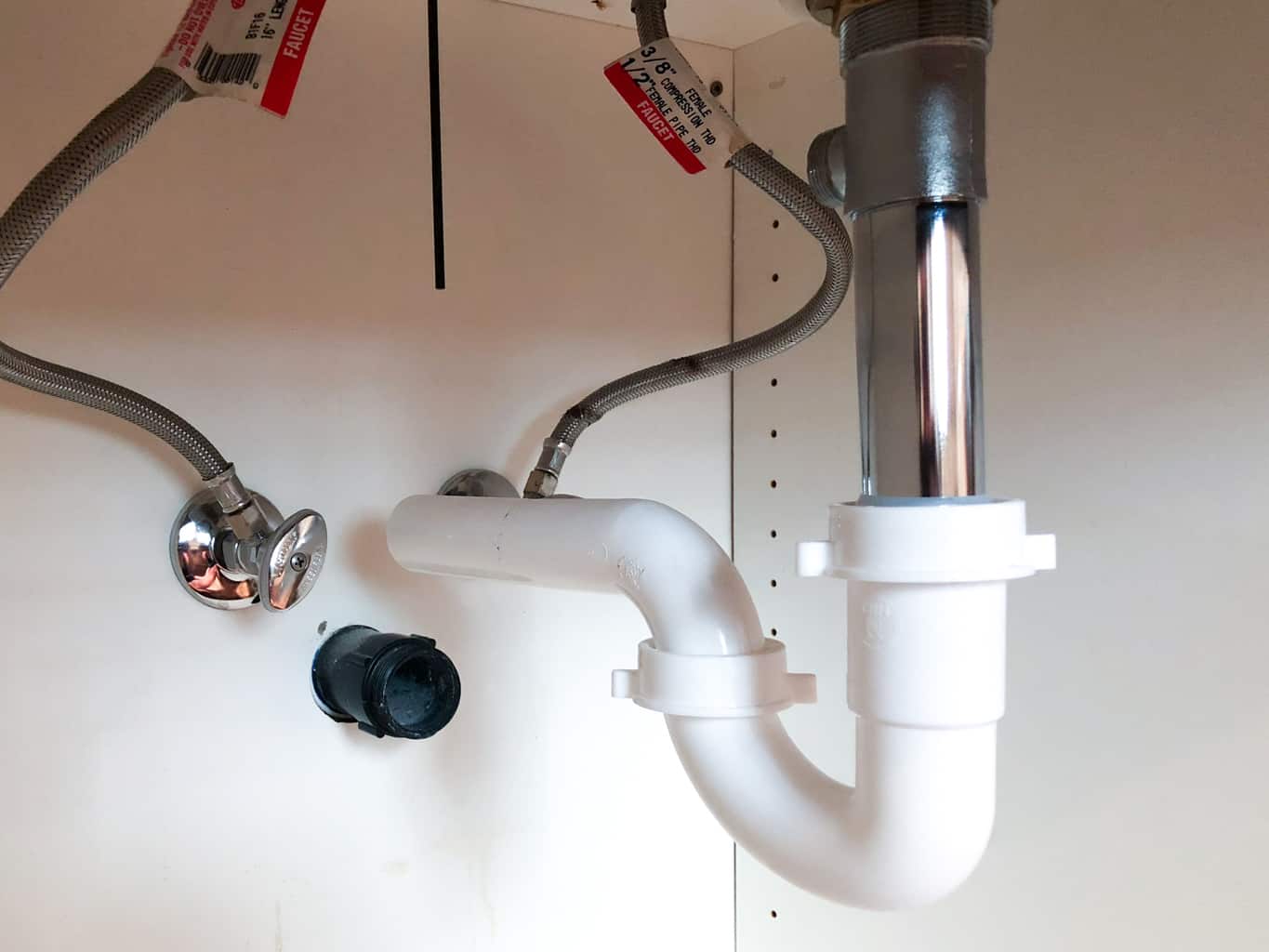


/water-pipe-under-kitchen-sink-980755656-3ec7719515ab4e269908381b760f7366.jpg)



